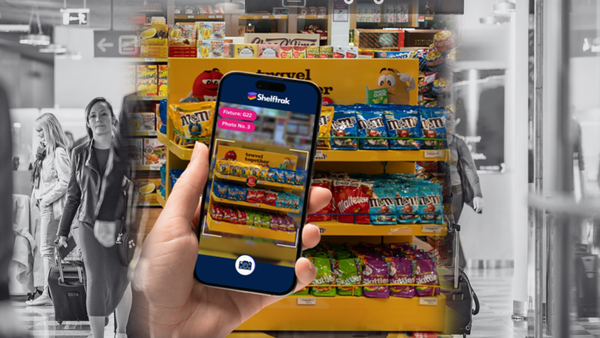Brands Have Lost Control and It’s Destroying Travel Retail
Brand owners and retailers are missing a golden opportunity; brands have lost the ability to lead categories effectively, and retailers have drifted away from genuinely serving their customers on a day-to-day basis.

Travel retail holds a unique position at the crossroads of commerce and convenience, serving a transient audience of global travellers 365 days a year. Yet, despite its enormous potential, a fundamental disconnect remains between what shoppers want and how retailers execute their strategies within core categories.
While brands and retailers excel at short-term High-Priority Promotions (HPPs), the focus on long-term category growth beyond these high-visibility activations is often lacking.
This misalignment has led to a fragmented shopping experience, where retailers understandably focus on operational and commercial metrics, while shoppers prioritise value, convenience, differentiation, and experience.
As a result, both brand owners and retailers are missing a golden opportunity — brands have lost the ability to lead categories effectively, and retailers have drifted away from genuinely serving their customers on a day-to-day basis.
The Fundamental Disconnect
A closer look at the hierarchy of priorities reveals stark differences between what shoppers seek and how retailers structure their approach.
Shopper Priorities
- Value – Travellers seek competitive pricing and perceived value for money, especially in an era where digital price comparison is instantaneous.
- Ease of Shop – Airports are high-pressure environments where convenience is key. Shoppers favour well-organised layouts, ease of navigation, and a seamless transaction process.
- Differentiation – Customers seek unique or different products beyond standard brand extensions and airport-only exclusives.
- Experience – Engaging retail spaces, immersive brand storytelling, and well-trained staff enhance the overall travel retail experience.
- Choice – A well-curated assortment that balances leading brands with exciting new discoveries appeals to diverse shopper preferences.
Retailer Priorities
- Revenue Generation – Retailers focus on maximising margins, often pushing premium pricing and high-margin products that may not align with shopper expectations.
- Operational Efficiency – Minimal staffing and efficiency-first fulfilment planning can lead to poor in-store experiences and a lack of personal service.
- Brand Partnerships – Retailers prioritise financially incentivised supplier agreements, resulting in the over-ranging of dominant brands at the expense of variety.
- Customer Acquisition – A reliance on promotions, discounts, and deal-driven merchandising often detracts from a shopper-first approach.
- Customer Choice – A misguided view and a lack of effective category management results in excessive product ranges, overwhelming shoppers and causing decision paralysis.
The Impact on Travel Retail
This misalignment between shopper needs and retailer execution has had profound consequences:
- Retail stores have become transactional rather than experiential. Shoppers do not feel engaged, leading to a loss of emotional connection with brands.
- Retailers have sacrificed differentiation for efficiency. Over-reliance on global brands has resulted in uniformity, reducing the unique appeal of airport shopping.
- The perception of value in travel retail has deteriorated. Travellers can now compare prices instantly online, and many find airport pricing uncompetitive.
- Operational streamlining has weakened customer service. Personalised recommendations and product knowledge are often lacking, diminishing the shopping experience.
- Brand owners have lost the ability to lead and shape categories. Instead of driving innovation and consumer engagement, they are often forced into retailer-driven negotiations focused on margin.
A Missed Opportunity
The failure to align retailer priorities with shopper needs represents a massive missed opportunity. Travel retail should be a showcase environment where brands captivate, inspire, and convert shoppers—yet, many parts of the industry have become overly functional and transactional.
- Brand owners have ceded control over category leadership, allowing retailers to dictate product mix and pricing, often at the expense of shopper appeal.
- Retailers have lost their ability to serve customers effectively, focusing on stock movement and revenue per square metre rather than genuine shopper engagement.
- Shoppers feel disengaged, with many opting to bypass stores altogether, leading to declining conversion rates.
The Path Forward: Brand Owners Must Lead the Transformation
To rebuild the value proposition of travel retail, brands must step forward and take a leadership role in retailer development — not just through insight data, but with vision and passion. Here’s how:
1. Insight-Driven Retail Strategy
Brand owners possess a wealth of shopper data that is often underutilised in retailer negotiations. Instead of reacting to retailer demands, brands must proactively shape category strategies based on genuine shopper insights.
- Use shopper and consumer data to inform total category product selection and merchandising strategies.
- Work with retailers to develop store layouts that align with shopper preferences.
- Implement pricing strategies that reflect global competitiveness while maintaining perceived value.
2. Product Innovation and Differentiation
Brand owners must push for true differentiation in products, executing regional specialities and limited-edition zones for shoppers to explore.
- Develop airport-specific SKUs — not just around brand extensions — that truly differentiate the travel retail offer from other markets.
- Curate (And effectively display) localised assortments that have a real story and resonate with the specific traveller demographics of each airport.
- Move beyond traditional formats to experience-led, interactive retail concepts.
3. Shopper Engagement & Experience-Led Retail
Retailers must work with brands to transform stores into experiential hubs rather than transactional spaces.
- Invest in staff training to ensure knowledgeable and passionate in-store teams.
- Create immersive brand experiences, pop-ups, and product discovery zones.
- Develop a seamless omnichannel approach, integrating digital tools and mobile payments.
4. True Retail Collaboration
The retailer-brand dynamic is too transactional and must change. Brands should collaborate with retailers on category management, promotional strategies, and shopper marketing.
- Work together on long-term category growth rather than short-term margin gains.
- Align store design, promotional events, and digital initiatives with brand storytelling.
- Encourage open data-sharing between brands and retailers to drive mutual success.
Conclusion
The disconnect between retailer priorities and shopper expectations continues to hold back the full potential of travel retail.
While retailers focus on operational efficiency and margin maximisation, shoppers crave value, convenience, and a differentiated experience. This gap has led to a transactional retail environment where brands struggle to lead, and retailers have lost the knack of serving customers effectively.
The solution lies in brand owners stepping up as leaders in retail development — not just by providing insight data, but by bringing vision and passion back into travel retail.
Through insight-driven strategies, product innovation, experiential retailing, and true retailer collaboration, brands can reshape the industry and unlock the true potential of the travel retail space.
The time for change is now — because in the battle between efficiency and shopper experience, only those who listen to their customers will ultimately thrive.
Don’t leave your travel retail success to chance
Shelftrak helps you monitor and optimise every display across your global duty-free footprint. Book a demo to see how our solution ensures you turn travelers’ heads – and capture their purchases – every time.






